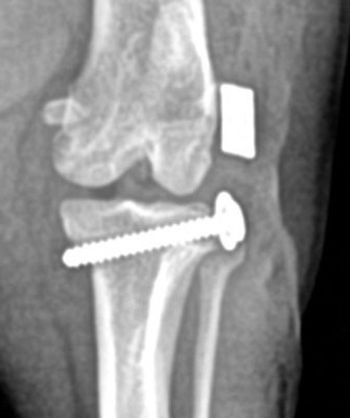Image Quiz
A 4-year-old spayed English bulldog presented with acute onset skin lesions. Her owners had just traveled across the state, and several days after returning home, noticed red bumps on her skin. She was not reported to be pruritic, but her skin lesions rapidly worsened.
On physical examination the dog was quiet, alert, and responsive with a rectal temperature of 102.5 °F. Her skin was painful to the touch. Clinical pictures of her skin lesions are shown in Figures 1, 2, and 3. Cytology of an intact pustule is shown in Figure 4.
Based on this information, what differential should you consider?
C: Cutaneous lupus erythematosus
D: Superficial staphylococcal folliculitis
(find the answer at the end of the article!)
This dog’s history, clinical picture, and cytologic findings were consistent with the subcorneal pustular disease pemphigus foliaceus (PF). Additional differentials to consider included cutaneous adverse drug reaction, severe staphylococcal folliculitis and furunculosis, and acantholytic dermatophytosis.1
PF is the most common autoimmune blistering disease in dogs.2 A cytologic hallmark of PF is inflammation characterized by acantholytic keratinocytes (the large purple cells shown on Figure 4) admixed with neutrophils, with or without eosinophils. This acantholysis occurs because of the production of autoantibodies targeting desmocollin 1 in the desmosome, the glue that holds the keratinocytes together.2,3
“PF may occur spontaneously in dogs of any age and with no known trigger. It is also possible that the development of PF may be due to an adverse cutaneous drug reaction therefore a thorough drug history is always warranted. In this patient, the recent travel may have been a stressful trigger that induced her PF.”
On dermatologic examination, this dog had numerous pustules with severe secondary crusting affecting her face, pinnae, paw pads, dorsum, ventrum, and limbs. An excellent differential for a pustular crusting disease is staphylococcal folliculitis. Staphylococcal infections, however, rarely affect several select locations on the dog such as the face, pinnae, and paw pads. When pustular crusted lesions are observed in these locations, an autoimmune disease such as PF should be prioritized as a differential. The definitive diagnosis of PF should be made with skin biopsies and histopathology because treatment involves long-term immunosuppression.4





